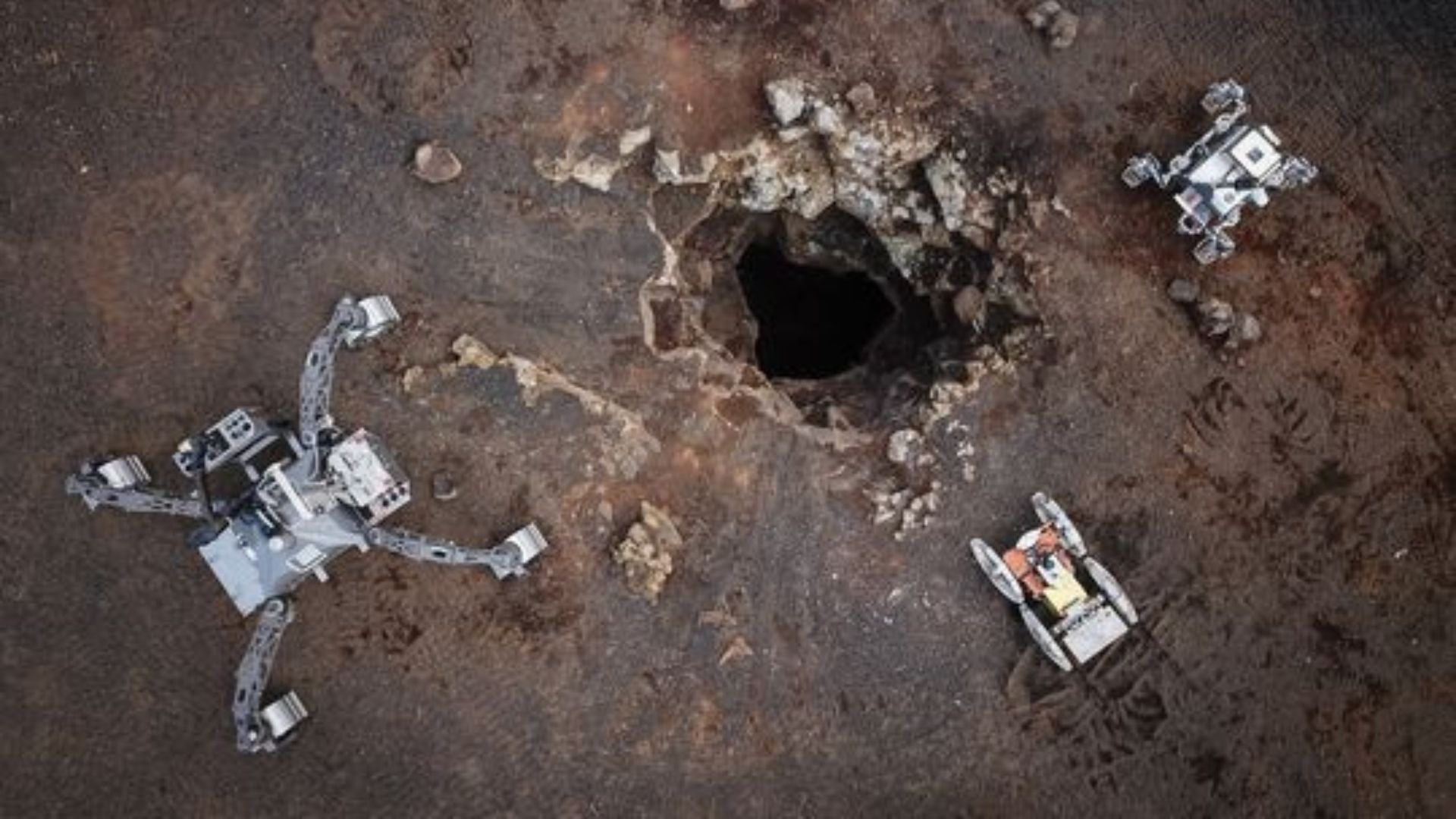Future missions to Mars and the moon may involve exploring underground lava tubes. These natural caves could hide signs of life and offer shelter for human settlements.
Scientists have now tested whether autonomous robots can handle the task in a real-world setting.
The trials took place inside a lava cave on Lanzarote, a volcanic island in Spain’s Canary Islands. The location was chosen because it closely resembles the underground structures found on Mars and the moon.
Underground shelters in space
Lava tubes form when flowing lava solidifies on the surface while molten rock continues moving below. Once the flow stops, long hollow tunnels remain. These structures exist on Earth and have been detected on Mars and the moon.
Researchers believe they could protect astronauts from harsh conditions, including extreme temperatures, radiation, and meteorite strikes. They might even host microbial life.
Human exploration of these caves is dangerous and costly. Robots offer a safer, cheaper way forward.
“A heterogeneous cooperative robot team is a promising approach to address the access and exploration of extraterrestrial lava caves,” wrote the researchers in Science Robotics.
Robots in the cave
The field trials lasted 21 days and unfolded in four stages. First, two rovers scanned and mapped the terrain around the cave entrance.
They then used one rover to launch a sensor-packed cube into the opening. This payload created a detailed 3D model of the entrance area.
The toughest phase involved both robots working in sync. The smaller rover attached itself to the larger one for a rappel down the cave wall.
Once inside, it detached and drove deeper into the tunnel. It managed to travel 235 meters while building a 3D map of the route.
These experiments showed that robots could carry out coordinated missions in complex underground spaces. They also proved that 3D mapping is possible in dark, enclosed environments.
Hurdles before space missions
The Lanzarote tests highlighted technical challenges. Moisture in the cave reduced the accuracy of the ground-penetrating radar.
Some mapping sensors experienced interference, and the lack of ground-truth data limited verification.
Autonomous navigation also remains a major hurdle. In a real Mars or moon mission, robots would need to operate without human guidance for extended periods.
That requires more advanced algorithms and reliable communication between units.
Despite the obstacles, the research points toward a future where robotic scouts prepare sites for human bases beyond Earth.
Such missions could identify the safest and most suitable locations for long-term stays.
The same technology could also support the search for life. If microbial life exists in protected underground environments, these robots could help find it.
The findings move scientists closer to answering one of humanity’s oldest questions, whether we are alone in the solar system.
The study is published in the journal Science Robotics.
